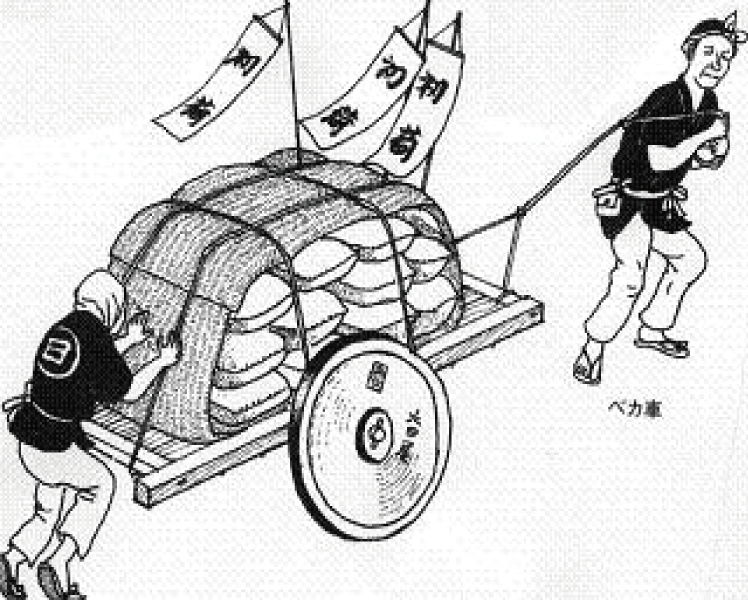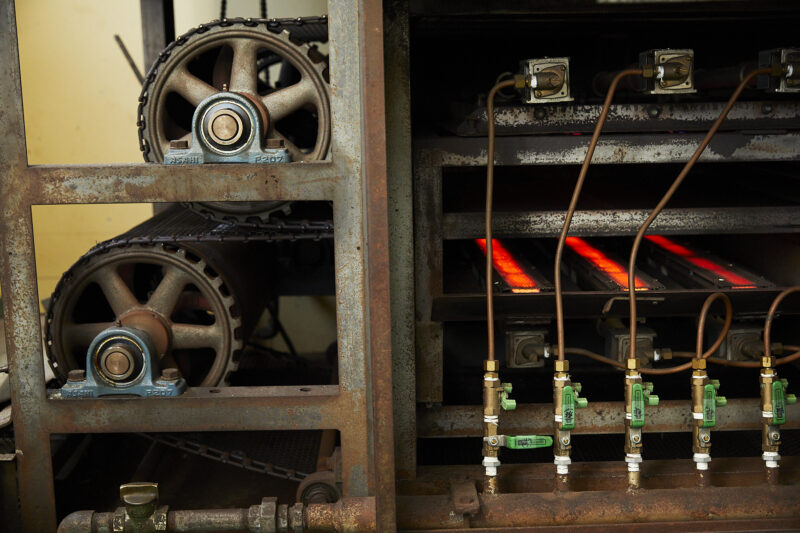
In 1935, our founder, Masao Yamane, moved from the rice-producing region of Ishikawa Prefecture to Tokyo as a young apprentice. He began selling rice confectionery in what is now the Meguro area under the name Yamane Shoten, just when the bronze statue of Hachiko was erected in Shibuya. At that time, cars were not as readily available as they are today, so he sold his products by pushing a handcart. Sometimes, he even traveled from Meguro to Yokohama as a traveling salesman.
After 1937, as agricultural production decreased and about a quarter of Japan’s domestic rice consumption relied on imports from Korea and Taiwan, ships and fuel became prioritized for military use, leading to a shortage of rice in Japanese households. During this time, a “grain passbook” was required to purchase rice.
During such times, while thickly baked senbei (rice crackers) were still mainstream, Yamane began making thinly baked senbei. The reason for this was said to be that spreading the rice thinly allowed for the creation of more pieces than thickly baked senbei.
After the war, Japan entered a period of rapid economic growth, an era brimming with energy and continuously adopting new things. When the bubble economy emerged, material wealth increased, and it seems that the rice confectionery industry was also actively exporting overseas. Thinly baked senbei also saw a period of popularity. Numerous companies started producing thinly baked senbei, and our company, having started early, was able to gain a leading advantage.
When the bubble burst in the 1990s, a wave of cost-cutting measures swept across all companies. It was the beginning of deflation. In the rice confectionery industry, thin baking had many risks of breakage. Many companies had been manufacturing it, but almost all of them withdrew from manufacturing due to the breakage loss. At that time, there were still many gift-giving customs, and “broken items” were considered bad luck. (Now, it’s a complex feeling as some companies intentionally break them to make products.)
More than 30 years have passed since then, and in Kanto, there are only a few companies left, including ours. I don’t think there are many nationwide. Being mindful of the difficult baking process and avoiding burning the senbei, the traditional taste of the crispy, thinly baked senbei is still loved by many people today.
